Al daaaj, Rostovcev ima.narativ, Maskin je prosto kasapljenje...
Mala istorijska biblioteka

- Posts : 15552
Join date : 2016-03-28
- Post n°577
 Re: Mala istorijska biblioteka
Re: Mala istorijska biblioteka
A sta mislite o 

_____
Što se ostaloga tiče, smatram da Zapad treba razoriti
Jedini proleter Burundija
Pristalica krvne osvete
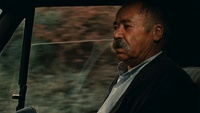
- Posts : 11623
Join date : 2018-03-03
Age : 36
Location : Hotline Rakovica
- Post n°578
 Re: Mala istorijska biblioteka
Re: Mala istorijska biblioteka
Nisam citao, ali ona preporuka gore kao da je za PUA stivo:
This lively, lucid tract reminds us that players gotta have attitude as well as game.
The Roman Revolution je klasik na temu pada rimske republike. Mada je to daleko od neke people's history of Ancient Rome.
This lively, lucid tract reminds us that players gotta have attitude as well as game.
The Roman Revolution je klasik na temu pada rimske republike. Mada je to daleko od neke people's history of Ancient Rome.
_____
Sve čega ima na filmu, rekao sam, ima i na Zlatiboru.
~~~~~
Ne dajte da vas prevare! Sačuvajte svoje pojene!

- Posts : 8095
Join date : 2020-09-07
- Post n°579
 Re: Mala istorijska biblioteka
Re: Mala istorijska biblioteka
Memoari Pavla Jakšića okačeni na Balk@nD0wnlo@d.
A i Kanetijeva Masa i Moć koju mi neko nikad nije vratio.
A i Kanetijeva Masa i Moć koju mi neko nikad nije vratio.
_____
Sweet and Tender Hooligan

- Posts : 35774
Join date : 2012-02-10
- Post n°580
 Re: Mala istorijska biblioteka
Re: Mala istorijska biblioteka
Nisam znao za ovu biblioteku, ima svasta. I listova pre WWI a ima i devedesetih https://xn--80aafkgm9bibt.xn--90a3ac/%D0%BF%D1%80%D0%B5%D0%B3%D0%BB%D0%B5%D0%B4
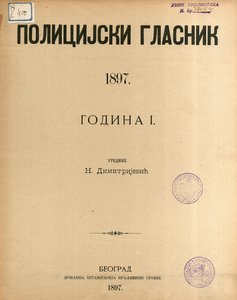
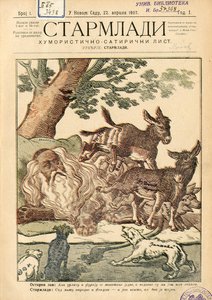
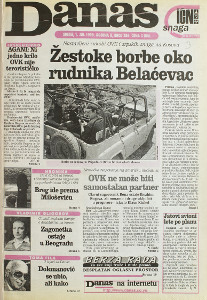
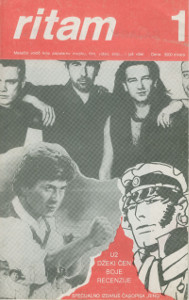




_____
★
Uprava napolje!

- Posts : 8095
Join date : 2020-09-07
- Post n°581
 Re: Mala istorijska biblioteka
Re: Mala istorijska biblioteka
Samo sam prelistao - na prvi pogled je jako zanimljivo - činjenica da je autor anoniman je po meni kvalitet više
Seven years in Vienna (August, 1907-August, 1914), a record of intrigue
https://www.gutenberg.org/ebooks/69834
Srbija i Srbi se pominju 180 puta
Seven years in Vienna (August, 1907-August, 1914), a record of intrigue
https://www.gutenberg.org/ebooks/69834
Srbija i Srbi se pominju 180 puta

_____
Sweet and Tender Hooligan

- Posts : 41631
Join date : 2012-02-12
Location : wife privilege
- Post n°582
 Re: Mala istorijska biblioteka
Re: Mala istorijska biblioteka
Одлично. Како је свет био једноставан...
_____
cousin for roasting the rakija
И кажем себи у сну, еј бре коњу па ти ни немаш озвучење, имаш оне две кутијице око монитора, видећеш кад се пробудиш...

- Posts : 8095
Join date : 2020-09-07
- Post n°583
 Re: Mala istorijska biblioteka
Re: Mala istorijska biblioteka
Dobar Kalember (iz arhive)
https://www.vreme.com/mozaik/padaj-silo-i-nepravdo/
https://www.vreme.com/vreme/smrt-fasizmu-sloboda-narodu/
https://www.vreme.com/mozaik/padaj-silo-i-nepravdo/
https://www.vreme.com/vreme/smrt-fasizmu-sloboda-narodu/
_____
Sweet and Tender Hooligan

- Posts : 52532
Join date : 2017-11-16
- Post n°584
 Re: Mala istorijska biblioteka
Re: Mala istorijska biblioteka
Nova istorija Srbije, ali, mislim, malo drugacija od dosadašnjih
https://www.cambridgeblog.org/2023/02/how-to-write-the-history-of-serbia-at-the-crossroads-of-the-national-the-regional-and-the-global/
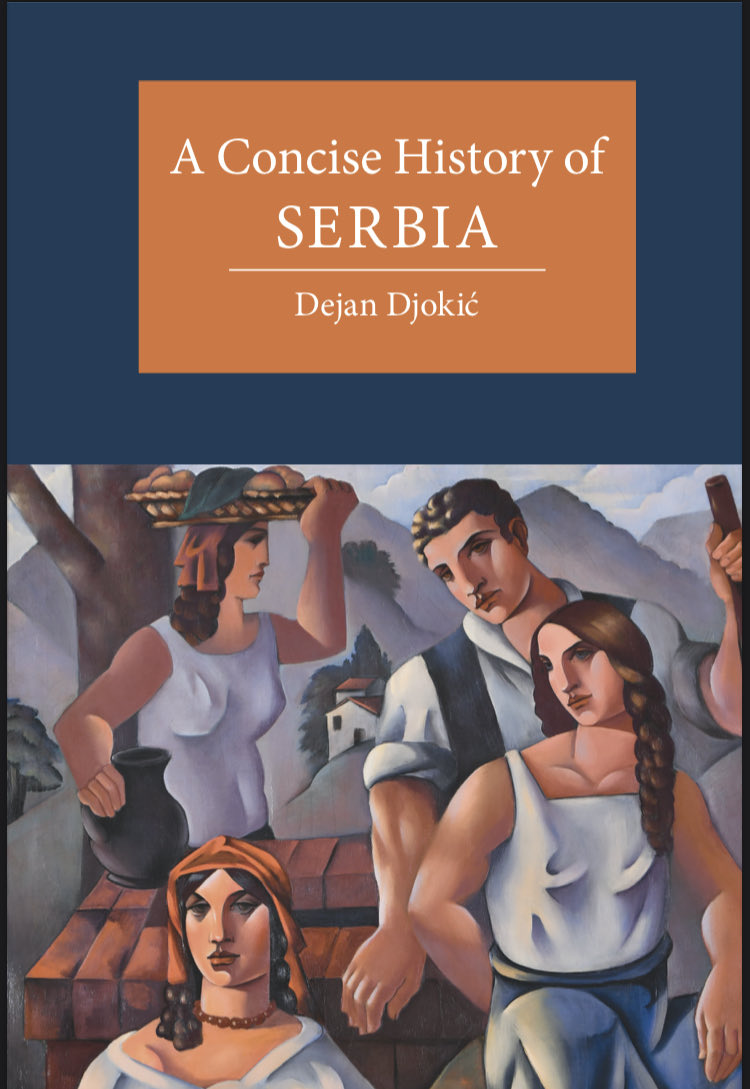
https://www.cambridgeblog.org/2023/02/how-to-write-the-history-of-serbia-at-the-crossroads-of-the-national-the-regional-and-the-global/

- Spoiler:
How to Write the History of Serbia at the Crossroads of the National, the Regional and the Global
Written by: Dejan Djokić
Serbia has been involved in events which have shaped the modern world – most notably in 1914 and during the Cold War and the 1990s Yugoslav wars – yet its history remains little known. In my new book, A Concise History of Serbia, recently published by Cambridge University Press, I show how migrations, encounters with neighbouring peoples and empires, and a strategically important geographic location, connecting central and western Europe with the Near East, have shaped Serbia. I thus challenge predominant self-perceptions and external stereotypes of Serbia as an introvert, homogenous nation with its own Sonderweg, a special path in history – although some features of Serbian history may be said to be unique, at least within the South-East European context. More broadly, my book reinterprets the history of Europe by complicating the East-West binaries; integrating Orthodox/Byzantine and Ottoman/Muslim legacies into broader patterns of European history; and demonstrating a long history of entanglements and communication between South-Eastern and wider Europe, frequently with global implications.
Structure and argument
One of the early challenges was to decide on the book structure and scope. How to write a scholarly history of a small country whose past remains relatively unknown and frequently misunderstood (both in Serbia and outside), in a way that it would be accessible both to historians working on other regions and non-specialists, and appealing to regional specialists? When to begin and when to finish were equally important and similarly difficult questions. Ultimately, I started at the ‘beginning’, that is with events about which speculation is possible from what survives of the sources. This allowed me to neatly begin the book with the migration of the Serbs to the Balkans (from an unknown location in East-Central or North-Eastern Europe), which probably occurred in the early seventh century as part of wider movements of Slavs and Avars, and to round it up with the contemporary migrant crises – one, better known, concerning Middle Eastern, Asian and African refugees passing through Serbia en route to western Europe; and another one caused by a large number of Serbs emigrating to more promising west European and north American destinations. Russia’s invasion of Ukraine has led to an influx of Russian, and to a lesser extent Ukrainian and Belarussian, refugees to Serbia.
The developments of the recent years have shaped my thinking about the past, both consciously and unconsciously, making this book different from previous histories of Serbia. My book was conceived, researched and written during the 1914–18 centenary commemorations, the anxiety caused by the ‘migrant crisis’, and finally the Covid-19 pandemic.
Several recurring and topical themes and threads hold the narrative together, including: migrations of peoples; an ever-shifting sense of where the nation’s borders lie; and a small nation’s relationship with neighbouring empires and peoples. The book traces the history of states, institutions and societies that Serbs built or helped build and in which they have lived, together with others. For most of the timeframe my book covers, no country called Serbia existed, but this problem is hardly unique to a historian of Serbia (it is shared by historians of Germany and Italy, Belgium, Bulgaria, Croatia, Czech Republic, Greece and Poland, to mention but a few countries). I saw this challenge as an opportunity to move beyond the history of high politics and diplomatic relations, providing the reader with a sense of how events described impacted individuals, both the elites and the ‘ordinary’ people, and how these developments shaped societies in which the Serbs lived.
To be sure, political history forms the central thread, but I integrate cultural, social and economic history, as well as the history of ethnic, religious, sexual and other minorities – in other words, less visible groups such as women, Muslims, Jews, Roma, Vlachs, Albanians, political dissidents, whose histories are also part of a history of Serbia. All this, I believe, makes my book unique among the existing histories of Serbia in any language. The book is also the most complete single-volume history of Serbia, because it pays due consideration to medieval, early modern and modern periods as well as contemporary events.
The problem of continuity
The modern period is arguably more relevant for understanding Serbia’s current predicament and we have far more sources about it than about medieval and early modern history. However, while researching and writing, I kept being ‘pushed’ back to more distant pasts, to seek answers and explanations for later events. In the end I gave up, persuaded that a history of Serbia, however concise, should not be merely a history of the modern period.
Studying medieval and early modern eras has been challenging and rewarding in equal measure; it has also been necessary, for there was a medieval Serbian state, or more precisely states associated with Serbs and their rulers. Serbs and Serbianized or Serb-identifying populations played an important role in the early modern history of East-Central and South-Eastern Europe, as one of the peoples living in the Habsburg–Ottoman–Venetian borderlands.
By writing about the earlier periods, I am not suggesting a continuity, interrupted by several centuries of Ottoman rule, between the medieval and modern Serbias, as is done in traditional historiography. On the contrary, doing so has I hope enabled me to challenge more convincingly the ‘continuity thesis’ and in the process interrogate and rethink the national framework.
A transnational national history
I was commissioned to write a national history in an era in which historians have rightly questioned the national framework and sought to study the past in transnational and global contexts, or to focus on micro histories or histories of emotions and senses. Having written this book, I have become even more convinced that history of Serbia and of the Serbs cannot be understood without understanding broader regional and European contexts, and outside the current historiographical trends.
At the same time, writing a scholarly national history remains important. Nation states continue to offer the dominant form of political organization in the modern world. Their monopoly over territorial rule was reasserted and grew stronger during the ‘migrant crisis’ of 2015 and the Covid-19 pandemic, paradoxically as a result of two very global crises. Finally, global and comparative histories cannot be written without scholarly national histories.
An independent medieval Serb kingdom emerged in the early thirteenth century, in the context of a temporary decline of Byzantium. Serbia had its own Orthodox church, but several of its kings had been Catholics; the Orthodox-Catholic coexistence in medieval Serbia is evident in a hybrid architecture of numerous surviving medieval monasteries and churches. Spiritually, medieval Serbia orbited towards Constantinople, but political (Hungary) and economic (Dubrovnik, Venice) connections with the ‘west’ remained until the Serb state was conquered by the Ottomans in the mid-fifteenth century.
My book shows how modern Serbia emerged in the transnational Ottoman-Habsburg borderland, in the backdrop of the French Revolution, Ottoman-Austrian-Russian wars and temporary collapse of Ottoman authority in the Balkans and North Africa in the late eighteenth and early nineteenth centuries. In no small part due to Serb peasant migrants, priests, traders and merchants, who lived on both sides of the border, this was a zone of contact as much as of conflict. Neither the Habsburg Military Border, which existed between the sixteenth and nineteenth centuries, and which was populated by a mix of Orthodox and Catholic South Slavs, nor an extensive network of border checks and quarantines designed to prevent the spreading of infectious deseases, could halt the movement of people, ideas and goods. Conversions to Islam among the local population meant that communication between Christians and Muslims living in this borderland rarely required interpreters. Indeed, the history of Serbia forces us to rethink East-West binaries on which much of our understanding of Europe is based.
Yugoslavia, with Serbia and Serbs at its core, was a transnational and internationalist project which played a significant role in global politics during the twentieth century. It provided a framework for reconciliation between the South Slavs, and also among Serbs, who fought on different sides in both World Wars. In developments mirroring those throughout interwar Europe, Yugoslavia abandoned democracy, but unlike elsewhere, the centralising royal dictatorship retreated in the second half of the 1930s, to give way to a partial restoration of democracy and introduction of federalism, as Serb and Croat elites sought a compromise. During the Second World War, anti-Fascist resistance, among the strongest in Europe, broke out in Serbia and elsewhere in the occupied country; it was driven by the liberation and postwar reorganization of Yugoslavia. After the war, the communist-governed Yugoslav federation was able to resist Soviet domination, to establish links with the West and help found the Non-aligned movement. Attesting to Yugoslavia’s special role outside the Cold War binary, this movement of newly post-colonial countries of the ‘Global South’ was established in Belgrade in 1961. As I hope my book demonstrates, studying Serbia and the central Balkans as a region connected and entangled with the rest of Europe which has sought to explore alternatives and ‘third ways’, encourages us to rethink European history in novel and original ways and makes studying this part of the world important.

- Posts : 8095
Join date : 2020-09-07
- Post n°585
 Re: Mala istorijska biblioteka
Re: Mala istorijska biblioteka
https://www.danas.rs/vesti/drustvo/intervju-istoricar-radosav-tucovic-kako-su-dragi-jovanovic-i-general-majsner-terorisali-okupiranu-srbiju/
Danas se i dalje uređuje lopatom. Par dana pre intervjua u linku objavili su jebenog Novaka Adžića.
Danas se i dalje uređuje lopatom. Par dana pre intervjua u linku objavili su jebenog Novaka Adžića.
_____
Sweet and Tender Hooligan


 by Nektivni Ugnelj Fri Oct 07, 2022 6:17 am
by Nektivni Ugnelj Fri Oct 07, 2022 6:17 am
 disident
disident